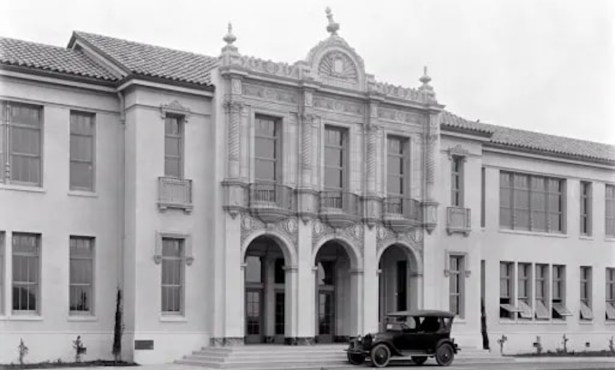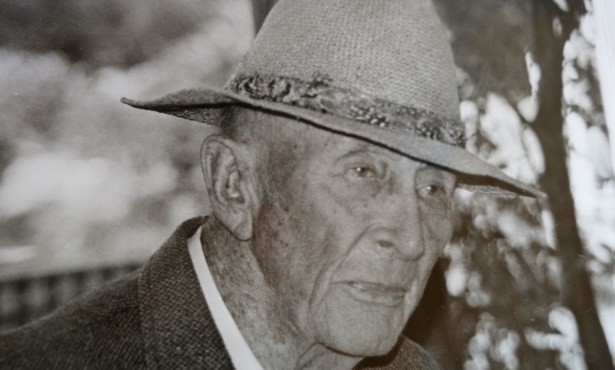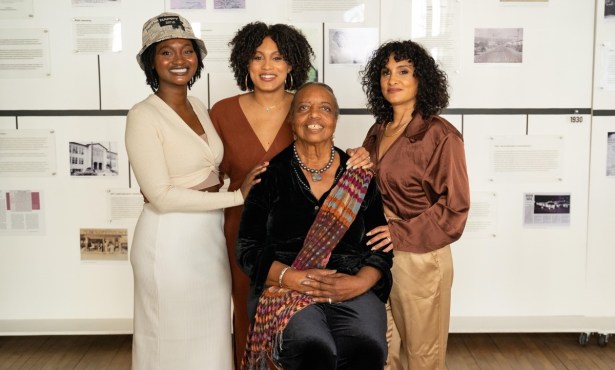Santa Barbara’s Black Icons
The African-American Individuals and Families Who Helped Shape Our Community
A former slave turned gold miner and horticulturist. A minister and musician. A teacher. An author.
Nineteen African-American individuals and their families who made major contributions to the Santa Barbara region are now on celebratory display at the Goleta Library as part of a new exhibit by the Santa Barbara County Genealogical Society.
The exhibit, explained outreach chair Holly Snyder, is the latest in an ongoing series of showcases by the Genealogical Society that “shines a light” on various cultural groups, beginning with Italian immigrants. While the physical African American display is hosted by the library, the show’s full complement of photos and in-depth information can be found at sbgen.org.
To create these profiles, Snyder said, Society members consulted their own records. They also sifted through birth certificates, wills, and newspaper clippings. But most helpful were the dozens of interviews, phone calls, and email exchanges with family members, who approved each mini-biography before it was published.
Helping lead the effort were committee member E. Onja Brown and longtime Santa Barbara poet and peace activist Sojourner Kincaid Rolle. Below are four condensed samples of the 19 richly detailed accounts.

Otto Artie Hopkins, 1897-1976
As a young man, Otto Hopkins played Negro League baseball, pitching for the San Antonio Longhorns. He also did some boxing. In the early 1920s, he and his wife moved to Santa Barbara because “it was the prettiest place he’d ever seen,” recalled his grandson, Wilbur H. Tate.
Otto worked briefly as a stone worker on the Hotel Californian and soon after opened his first club, The Cotton Club, located across the street from St. Paul AME Church on Haley Street. It was a place where multiple ethnicities drank, danced, and carried on together at a time in American history when Jim Crow laws and segregation were still enforced with terrifying results in other parts of the country. “Blacks and whites intermingled,” said Tate. “They had a ball.”
In 1935, after a 10-year run, The Cotton Club was shut down when Santa Barbara mayor E.O. Hanson got into a headline-grabbing street brawl with a fellow night-clubber. Otto later opened a supper club, the Brown Derby Club, in the same location, and went on to form the Desert Inn Night Club in Las Vegas, purportedly the first integrated nightclub in the city.
Valencia King Nelson, 1928-2019

In the early 1980s, Valencia Nelson and her husband, Herman, started a program that would one day become the Food Bank of Santa Barbara. At first they did it all themselves, distributing food to needy Eastside residents by renting a truck and picking up surplus government food in Oxnard.
Valencia would go on to become a social worker for the county’s Welfare Department and specialized in helping new mothers with understanding the needs, both physical and emotional, of their infants. She was also an active member of Santa Barbara’s NAACP chapter.
Later in life, after retiring and moving back to her hometown of Anniston, Alabama, Valencia and several friends established what would become the largest repository of African American genealogical research information in the United States. The organization, AfriGeneas, was established in 1999 and continues to this day.
Floyd E. Norman, 1935-

While at Santa Barbara High School, Floyd Norman was introduced to and began assisting local cartoonist Bill Woggon, creator of the “Katy Keene” comics. After graduation, Floyd attended Art Center College of Design in Pasadena, and in his senior year, he was recruited by Walt Disney Studios, becoming the company’s first African-American cartoonist.
In 1958, Floyd took a hiatus from Disney to serve in the army in Korea. He was stationed near the DMZ for fourteen months. He returned to the Disney Studios in 1960 and worked on such films as The Jungle Book, Mary Poppins, and Sleeping Beauty. Floyd left the studio upon Walt Disney’s death in 1966 and cofounded Vignette Films Inc., one of the first companies to produce films on subjects of Black history. More recently, he worked as a story artist for Pixar on Toy Story 2 and Monsters, Inc.
“At the ripe old age of 85, I’m busier than ever,” Floyd said. “Many years ago, I sat in the library of Santa Barbara Junior High and determined one day I would go to Hollywood and create movies. I ended up doing just that.”
Anita Johnson Mackey, 1914-

The granddaughter of an emancipated slave, Anita Mackey became the first African-American supervisor in the Veteran Association’s outpatient clinic in Los Angeles before moving to Santa Barbara in 1964 when the VA opened an office here.
A tireless advocate and ally for those in need, she would go on to serve on many local boards and commissions, including the Civil Service Commission, City Housing Authority, and Mental Health Advisory Board. She became one of the community’s first psychiatric social workers of color, and in 1976, she was named Santa Barbara Woman of the Year
Anita and her husband, Harvey, who had no children of their own, adopted a 22-year-old young Nigerian man, Alexander Adekanmbi, who earned a PhD from the University of Oregon, became a college professor in Nigeria, and was elected chief of his community. Anita was also an extensive traveler throughout her life, visiting all seven continents and more than 130 countries. On January 5, 2021, she turned 107 years old.
Support the Santa Barbara Independent through a long-term or a single contribution.




You must be logged in to post a comment.